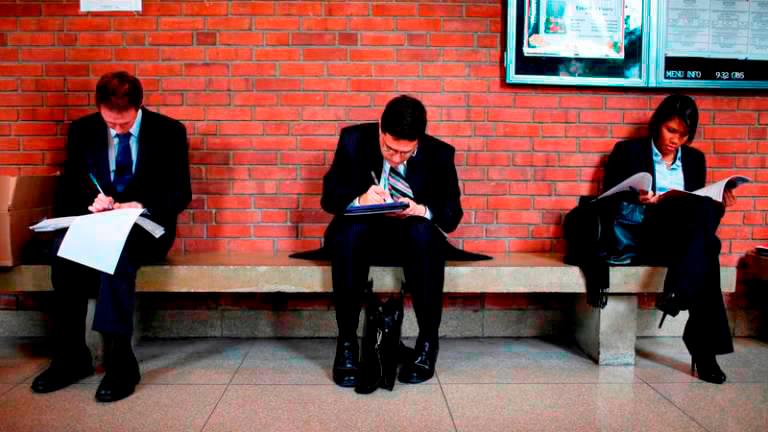EVEN though the unemployment rate tempo is decreasing with the September figure produced by the Statistics Department (SD) at 3.6% (from 3.7% in August), one thing that has often being overlooked and discounted is underemployment which should also be accorded equal policy emphasis and priority – notwithstanding or rather precisely because of the growing popularity of the gig economy.
The steadily downward trend in the unemployment rate might be due to more people having decided to settle for any kind of job available to cope with the rising cost of living, including new entrants (i.e, those who have not worked before or stopped working previously).
This can be also seen in the increase in the Labour Force Participation Rate which “rose 0.9 percentage points to 69.2%”.
Both unemployment and underemployment represent different forms of labour underutilisation.
Underemployment – which simply means underutilisation of the working or active labour force – can be further defined as time-related (TRU) and skills-related (SRU).
In the context of Malaysia, the SD defines TRU as those who are employed for less than 30 hours per week (i.e, below capacity) whereas SRU is defined as those with tertiary education working in semi-skilled and low-skilled occupations (i.e, skills or qualifications mismatch).
In the context of the gig economy, both TRU and SRU can overlap and converge, a critical point that perhaps has been neglected in the government’s policy analyses, discussions and formulations so far, irrespective of which coalition was in power.
This can also be readily discerned in the manifestos of all three main coalitions, set against the backdrop of the current general election.
The Pakatan Harapan (PH) manifesto fired the first salvo (with the hope of outflanking its opponents) by a policy attention on gig workers.
For example, PH has vowed to provide for a “career progression system” for gig economy workers, whereby “gig economy companies will be given incentives for developing the skills and career of their employees ... (whereas) SPM graduates will be encouraged to further their studies in TVET (technical and vocational education training) fields”.
As for the Perikatan Nasional manifesto, it mentions a special incentive of RM1,000 for gig economy workers to pursue tertiary studies at accredited higher educational institutions, but made no mention of youth underemployment.
Even under the Barisan Nasional manifesto, which promises to enact a Dependent Contractor Act for gig economy workers, it has not paid attention to addressing and resolving the problem of youth underemployment.
Like unemployment, the overall underemployment rate has decreased.
The SD in its labour market review for the second quarter (Q2) of 2022, reported that the rate for TRU reduced from 2% to 1.4%, while the rate for SRU decreased from 37.7% to 36.7% between Q2’22 and Q2’21, respectively. But it does not tell the whole story.
This can be readily seen in the SD’s September 2022 Labour Force Statistics (LFS) Report.
It reports that for September 2022, the youth unemployment rate for those aged between 15 and 24 was 12.1% and youth unemployment rate for those aged between 15 and 30 was 7.1%.
The youth unemployment rate – understood as “capturing” the fresh graduate category or otherwise those within the range – has consistently stood at three times the national unemployment rate.
Now, the underemployment rate should be higher when we consider the growth of the gig economy.
According to the World Bank, Malaysian gig economy workers comprise approximately 26% of the workforce (i.e, the labour pool in employment), which is not very far from one out of three workers which translates into about four million freelancers.
According to jobs market expert Joelle Pang, who is the managing director of FastJobs Malaysia a job search portal, a study conducted by Zurich Insurance Group and the Smith School of Enterprise and the Environment (University of Oxford) in 2020 found that 38% of Malaysians who were currently employed full-time were considering joining the gig economy within the next year.
This percentage was considerably higher than the global average of 20%.
We should therefore expect to see that the underemployment figure, including for youth, would be “range-bound”.
According to the LFS for September 2022, again, the underemployment figure had only marginally reduced by 100,000 from 2.1 million in 2021, to two million so far.
In fact, the figure for SRU for 2021, which was at 1,838,300 million, has not come down but marginally increased to 1,839,600 million by Q3’22 (a decrease of only by 1,300) – which shows range-bound movement.
For TRU, the figure has come down marginally from 293,100 to 186,000 (a decrease of only 107,100).
As a time-series record (according to quarters), the SD’s LFS goes back to 2017.
For TRU, the figures from 2017 until 2019 consistently displays range bound behaviour – jumping only by 116% in 2020 due to the shock therapy of the movement control orders (MCOs) implemented to contain the transmission of Covid-19.
On a quarterly basis, the figure for Q2’20, which was the height of the first MCO, was 413,500 underemployed.
It was also the highest for youth aged 15 to 24 as by Q4’20, the underemployment had spiked to 130,300 (the highest ever) and was the largest contributor to the overall figure of 369,100 (at 35%).
By September 2022, those aged between 25 and 34 made up the largest sub-category at 67,400.
What it could mean is that fresh graduates and those within the age range of 15 to 24 are increasingly competing with the 25 to 34 age group for gig economy jobs but with the former working longer hours than the latter possibly due to lower delivery rates than before.
When it came to SRU, the figures exhibit linear growth of an average of a 100,000 increase per year between 2017 and 2019.
The figure jumped from 1,540,900 in 2019 to 1,886,800 to 2020, representing a 350,000 increase which translates into a jump of 246%.
From 2020 to Q3 (i.e, until September), the SRU rate hardly came down (1.887 million, 1,838 million, 1.84 million, respectively).
For Q3’22, those aged between 25 and 34 comprise 861,400 which represents 47% (or close to half) of the total underemployed, followed by those aged between 15 and 24 at 344,100.
This could imply that there are not enough jobs that commensurate with a graduate’s qualifications or skilled-job openings in the labour market.
Again, under the SRU, the compound annual growth rate (CAGR) based on 11 quarters from 2017 to 2020 is 2.43% and from 2020 to 2021 based on four quarters it is 5.19%.
On a typical annualised basis, the CAGR from 2017 to 2022 is around 6% which is a staggering six times the same for the unemployment rate (i.e, CAGR from 2017 to 2022).
In both TRU and SRU, we can now appreciate that the situation is a persistent hidden problem and, therefore, structural (instead of cyclical).
This means that at least for the past decade or so, the government has been ineffective in remedying the problem.
In an article titled, “Malaysia’s Youth on the Unemployed Frontline” on a portal, Bridget Welsh and Calvin highlighted how the employment rates for youth are persistently higher and tend to be much more sensitive to economic conditions than the overall unemployment rate.
But also, “that it is getting considerably harder and harder for young Malaysian job seekers to find employment compared with the overall population. The gap between younger Malaysians and others in the labour force is widening”.
This would point to not only youth unemployment but, by extension also, underemployment being structural since many would be compelled to do gig economy jobs which in turn would become more competitive in terms of the hours offered, not to mention the skills mismatch (for graduates).
There is the discredited non-accelerating inflation rate of unemployment or Nairu, policy approach which has enabled the creation of a large pool of unemployed as embodied in the EU (outside Germany) and that is permanent, by default or what is termed as “hysteresis” (i.e, unemployment as a long-term and structural phenomenon irrespective of the business cycle).
There is also the “hysteresis” associated with underemployment by right.
In short, there will always be an army or a large pool of underemployed youths with implications for wages, skills, savings (present and retirement), access to affordable housing, socio-economic mobility, and not least repayment rates for the National Higher Education Fund Corporation, which relies on borrowings at commercial rates (on the basis as government-guaranteed debts) to provide funding or loans to students (which is unsustainable).
Furthermore, the unconditional cash transfers would continue to increase, diverting fiscal resources which could be better deployed for upskilling, reskilling and cross-skilling schemes and programmes.
Introducing the GST in this context is highly regressive and is tantamount to placing the fiscal weight and burden on the underemployed, among the lower-income groups, which overall and together constitute the majority of wage earners (at least, that is the reality on the ground in terms of the implementation – when it came to the net effect, overall, prices went up and did not come down).
Lack of prospects for wage increases via career progression on the back of better or higher qualifications and skilled training means our tax base could also become “stagnant” or grow sluggishly.
It is time that all competing coalitions seriously (re)look the issue of underemployment that has been a hidden blight in our nation’s economy all this while.
In another article, EMIR Research will then advance key policy recommendations for effectively addressing and reducing the incidences of underemployment in the country.
At the end of the day, politicians and policy makers should acknowledge the problem of youth underemployment and not overlook it.
Jason Loh Seong Wei and Farah Natasya Muhamad Ridzuan are part of the research team of EMIR Research, an independent think tank focused on strategic policy recommendations based on rigorous research. Comment: letters@thesundaily.com














